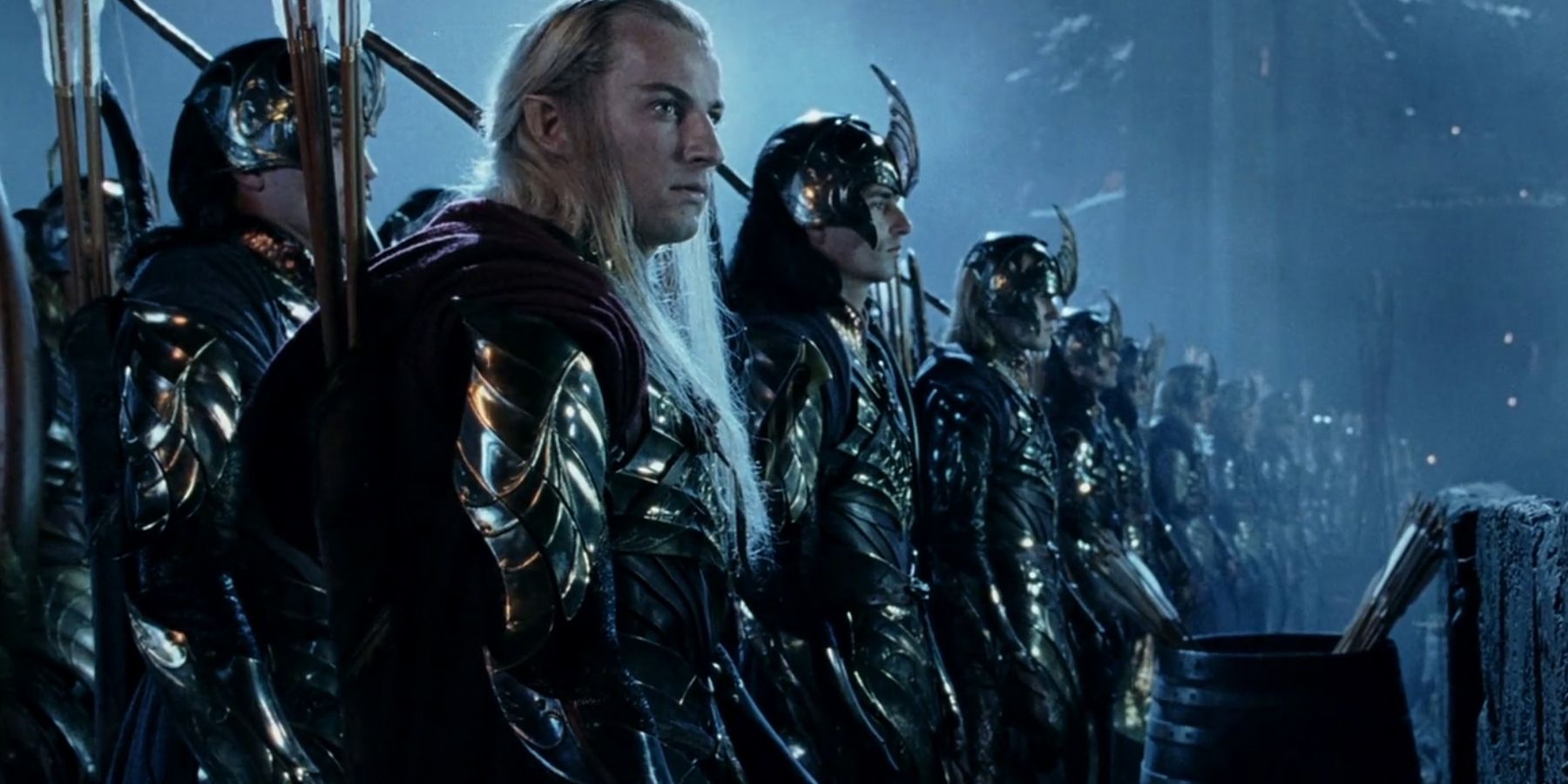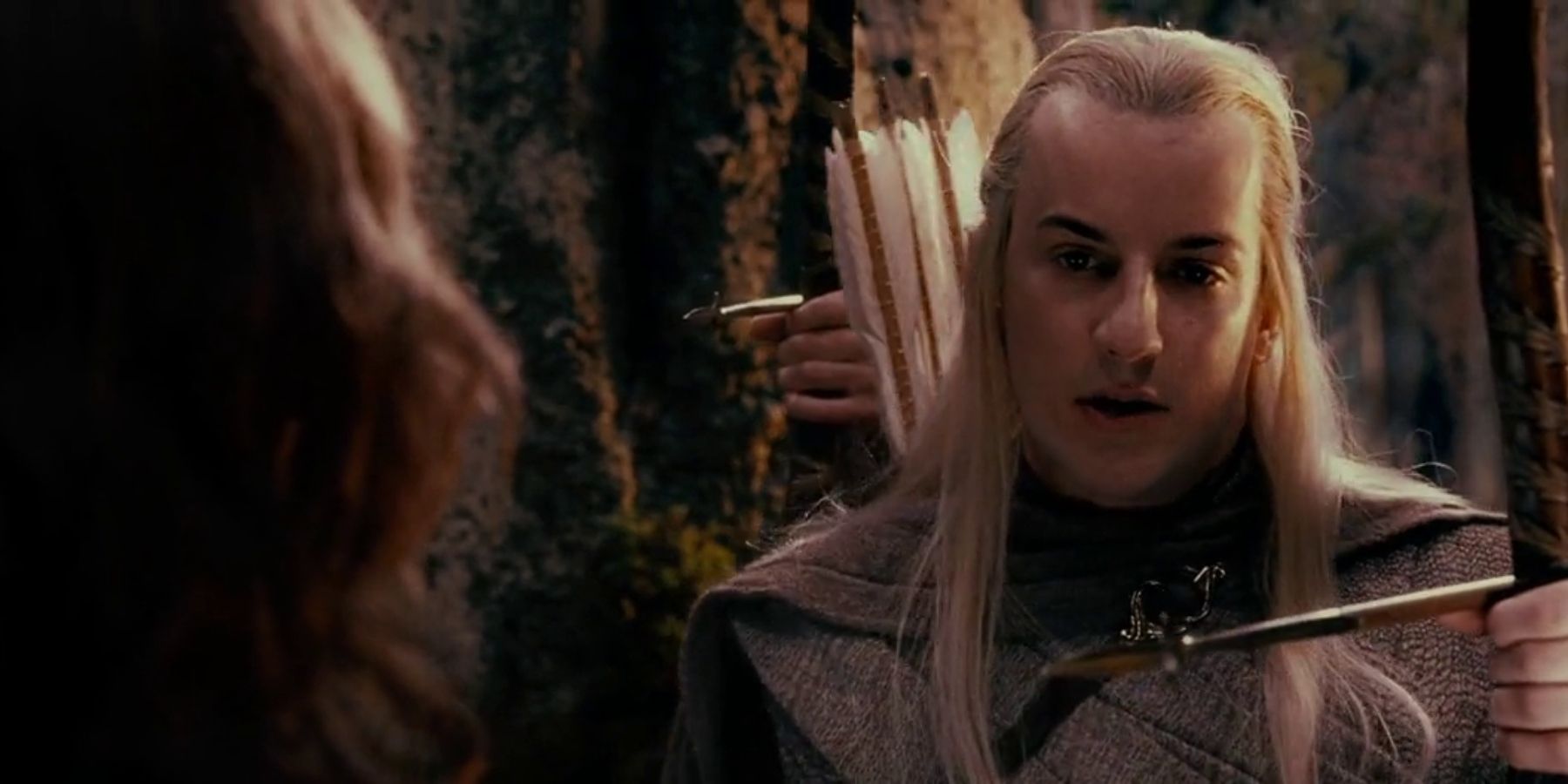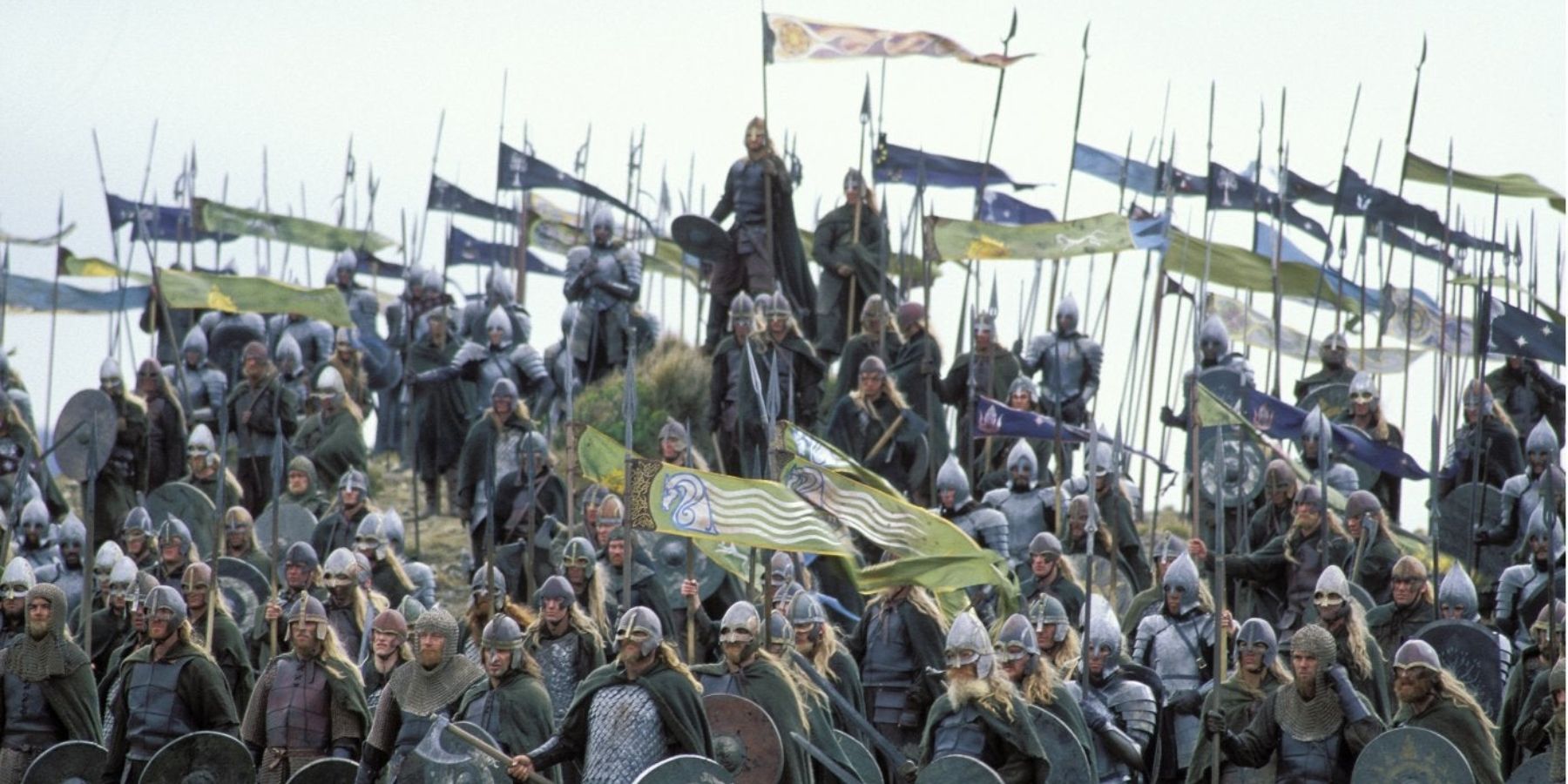One of the most harrowing scenes throughout the Lord of the Rings trilogy is the Battle of Helm’s Deep. During the 2002 film adaptation of the Two Towers by Peter Jackson, the audience can see several brave members of the fellowship fighting in dire straits to protect the women and children hidden inside the tunnels below the keep. Alongside Gimli, Aragorn and Legolas, there is a host of elven archers and warriors led by the familiar face of Haldir of Lothlorien. But how is this scene different in the books?
First of all, it is important to understand the directive decision that Jackson made in including the elves in this famous scene. The audience first meets Haldir as he accosts the members of the fellowship in the forest after they have escaped from the Mines of Moria. He is in charge of bringing them to his queen, Lady Galadriel, and escorts them, blindfolded, through the woodland realm. Throughout their stay in Lothlorien, Gimli insults Haldir and vice versa, but the two come to find mutual respect before the fellowship head onwards to Amon Hen, laden with the gifts of cloaks, weapons and the secret Lembas bread, where Frodo and Sam separate from the others towards Mordor, and Merry and Pippin are taken by the Uruk-hai.
By the time the members of the fellowship reach helms deep with the men of Rohan, it is clear that their armies are vastly outnumbered. In the film versions, this is resolved when their old friend Haldir travels from Lorien with an army of golden clad elves, to fight at their side and help them win the day. In one of the most tragic scenes of the trilogy, Haldir dies in the battle, in the arms of Aragorn, who mourns him and his kin.
In the original planning of the film, Arwen too was supposed to appear at the battle and fight alongside her love, but ultimately the director made the decision to cut these scenes. Many Lord of the Rings fans feel that this was an error on his behalf because it would have added depth and strength to Arwen’s character. But her strength is one of hope and resilience, instead of power and formidable battle skills like Eowyn. However, Jackson still wanted to keep the other elves at Helm's Deep, to show their solidarity with the quest to destroy the ring and to keep them in play as key characters in the fight against Sauron’s evil.
This is a very different interpretation from the books, in which the elves of Lothlorien never join the siege at Helm's Deep, and are instead too preoccupied with defending their own lands from the evils pouring forth out of Mordor. Instead, when Gandalf rides in on the back of Shadowfax, with the white light behind him to distract the orcs and a host of Rohan riders by his side, it is Erkenbrand of the westfold who rallies beside him and saves the day.
Although Erkenbrand doesn’t feature in the films, he is an important member of the Rohan guard and is in charge of protecting the west lands. Just prior to the siege of the keep, he and a group of his men are ambushed by orcs near the Ford of Isen, and are feared dead by Eomer and his uncle Theoden when they don’t return. But Gandalf manages to find and rally the survivors, who ride in with him and overpower the remaining Orcs, driving them back into the surrounding forests.
After the battle is won, Erkenbrand is tasked with honoring the Rohirrim dead by finding and creating burial sites so that they aren’t eaten by the carrion crows of Saruman. He is also tasked with dealing with the Men of Dunland, and finding a peaceful way of sending them back to their own lands, so he makes them 'take an oath never again to pass the Fords of Isen in arms.' In the Fourth Age of the world, when the kingdoms unite in peace, Erkenbrand is made a Marshal by Eomer when he becomes king.
Although the elves fighting at Helm's Deep didn’t actually happen in the books, and Erkenbrand, one of the most heroic characters in the text was subsequently left out of the films, many fans like this change that Peter Jackson made. It is a powerful and emotive scene that demonstrates Tolkien’s beliefs in the futility and devastation of war, and also champions the important messages of the books such as loyalty, bravery and honour in the face of death. This can also be seen in a tribute during the Return of The King film, in which a Rohirrim soldier is shown wielding an elven flag at the Battle of the Black Gate, in remembrance of the fallen elves who gave their lives to not let the strong-hold fall.



